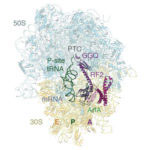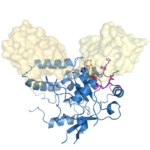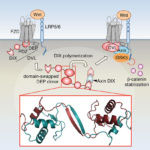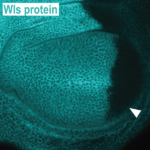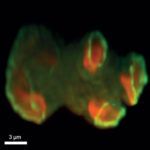
Macropinocytosis, the cellular uptake of fluids from the environment, is employed by a variety of cells and requires the formation of a cup-shaped structure that protrudes from the cell’s surface and captures gulps of medium. Polymerisation of actin under the plasma membrane drives the extension of macropinocytic cups. However, until now it has been unclear how the actin forming the walls of the cup is shaped into a ring.
